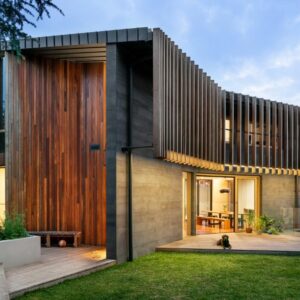The Netherlands, with its picturesque canals, windmills, and tulip fields, is also home to a rich architectural tradition. One of the most striking features of Dutch architecture is the use of façade decor. This decorative element, which adorns the exteriors of buildings, is a testament to the country’s commitment to aesthetics and its ability to blend the old with the new. In this article, we delve into the world of façade decor in the Netherlands, exploring its history, significance, and the modern innovations that are keeping this tradition alive.
Historical Roots of Dutch Façade Decor
Gables and Their Significance: The Dutch are known for their step gables, neck gables, and bell gables. These gables, often intricately decorated, were not just aesthetic additions but had practical purposes. They indicated the wealth and status of the homeowner and were also used to hang pulleys for moving goods in and out of the house. The ornate designs carved into these gables are a testament to the craftsmanship of the era.
Symbols and Emblems: Many historic buildings in the Netherlands feature symbols and emblems on their façades. These could represent the profession of the homeowner, religious beliefs, or simply be decorative elements. For instance, a building might have a carved ship if the owner was a sailor or merchant.
Use of Materials: Traditional Dutch façade decor often employed local materials like brick and stone. The use of these materials not only added to the durability of the structures but also gave them a distinctive look that is synonymous with Dutch architecture.
Integration with Architecture: The façade decor in historic Dutch buildings was not an afterthought. It was integrated into the design from the outset, ensuring that the building looked harmonious and balanced.

Modern Innovations in Façade Decor
Sustainable Materials: With the growing emphasis on sustainability, many modern Dutch architects and designers are opting for eco-friendly materials for façade decor. This includes recycled materials, green roofs, and even materials that can capture and store energy.
Digital Design: The advent of digital design tools has revolutionized façade decor. Designers can now create intricate patterns and designs with precision, allowing for more complex and visually stunning façades.
Functional Decor: Modern façade decor in the Netherlands is not just about aesthetics. Many designs now serve functional purposes, such as providing insulation, capturing solar energy, or even cleaning the air.
Global Influences: The Netherlands, being a global hub, has seen influences from around the world in its architecture. This is reflected in the façade decor as well, with designs borrowing elements from various cultures, yet always retaining a distinct Dutch touch.
The Role of Manufacturers in Keeping the Tradition Alive
Quality Craftsmanship: Manufacturers ensure that the tradition of quality craftsmanship, which is integral to Dutch façade decor, is maintained. They employ skilled artisans who are trained in traditional techniques but are also adept at using modern tools.
Customization: With the demand for unique and personalized designs, manufacturers now offer customized solutions to clients. This ensures that each building can have a distinct identity while still being rooted in the Dutch tradition.
Research and Development: To stay ahead in the industry, manufacturers invest in research and development. This helps them come up with innovative designs and materials that are in line with contemporary needs.
Collaboration with Architects: Manufacturers often collaborate with architects right from the design phase. This ensures that the façade decor is in sync with the overall architectural vision.

Spotlight on a Leading Manufacturer
In the realm of façade decor, one manufacturer stands out for its commitment to quality and innovation: https://grafio-decor.com.ua/en. With a keen understanding of both traditional Dutch design principles and modern architectural needs, Grafio Decor is at the forefront of bringing the best of both worlds to its clients.
Conclusion
Façade decor in the Netherlands is a beautiful blend of tradition and modernity. While the country cherishes its rich architectural heritage, it is also open to innovations that cater to contemporary needs. Manufacturers like Grafio Decor play a pivotal role in this, ensuring that the legacy of Dutch façade decor is carried forward, with a touch of the new.













